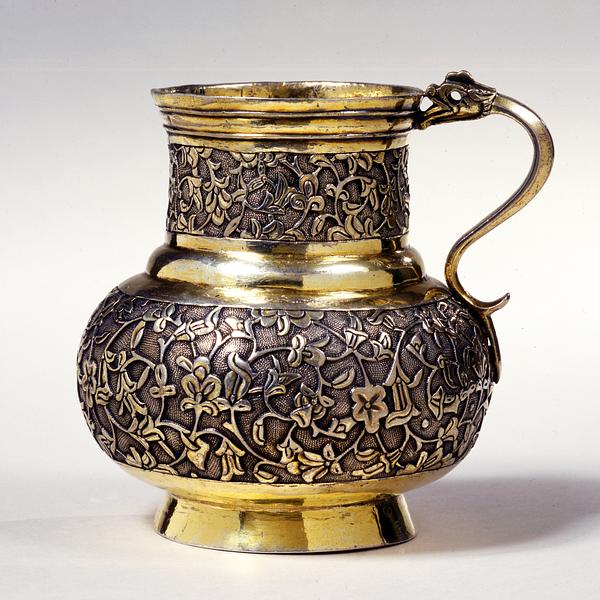Jug, parcel-gilt silver, embossed, engraved, and punched, with a cast handle
Ottoman Empire; c. 1550
H: 11.8 cm
The form and dragon handle of this jug make it resemble Timurid models from the 15th century. The decoration’s spiral stems resemble the ones found on tughras on Ottoman firmans and on the group of Iznik pottery called Golden Horn, or tughrakes type.
Written sources describe how jugs made of precious metal were chained to the many drinking fountains in the palaces. A jug like this one may have served such a purpose. Not many objects of gold and silver from the 16th century have been preserved; innumerable wars often required sacrifices in art as well.
Inv. no. 15/1986
Published in:
Sotheby’s, London,16/4-1986, lot 73;
Art from the World of Islam. 8th-18th century, Louisiana, Humlebæk 1987, cat.no. 191;
Soliman le Magnifique:15 fevrier au 14 mai 1990, Galeries Nationales du Grand Palais, Paris 1990, 1987, cat.no. 188;
Kjeld von Folsach: Islamic art. The David Collection, Copenhagen 1990, cat.no. 354;
Kjeld von Folsach: Fabelvæsner fra Islams Verden, Davids Samling, København 1991, cat.no. 42;
Kjeld von Folsach, Torben Lundbæk og Peder Mortensen (eds.): Sultan, Shah and Great Mughal: the history and culture of the Islamic world, The National Museum, Copenhagen 1996, cat.no. 392;
Kjeld von Folsach: Art from the World of Islam in The David Collection, Copenhagen 2001, cat.no. 531;
Karin Rührdanz:”"Ein Kändlein von Schwartzgriener Igiada": Persianate nephrite vessels” in Mediaeval and Modern Iranian studies : proceedings of the 6th European Conference of Iranian Studies (Vienna, 2007), Leuven 2011, fig. 2;
Yuka Kadoi: “From China to Denmark: a “Mosque lamp” in context” in Journal of the David Collection, 4, 2014, p. 215, fig. 14;
